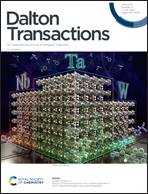Preparation of Bi/BiOBr sensitized titania nanorod arrays via a one-pot solvothermal method and construction of kanamycin photoelectrochemical aptasensors†
Abstract
In this work, a photoelectrochemical (PEC) aptasensor for detecting kanamycin (KAN) was designed based on an aptamer modified Bi/BiOBr/titania nanorod array (TiO2 NRA). Bi/BiOBr was loaded onto the TiO2 NRA via a one-pot solvothermal method using glucose as a reductant. The p–n heterojunction structure constructed from chrysanthemums like BiOBr and the TiO2 NRA improves the electron transfer rate. Combined with metal Bi with the surface plasmon resonance (SPR) effect, it further increases the absorption range of visible light and enhances the light response performance of the PEC aptasensor. The KAN aptamer is fixed to the Bi/BiOBr/TiO2 NRA photoelectric material through the C![[double bond, length as m-dash]](https://www.rsc.org/images/entities/char_e001.gif) N structure. Once the aptamer precisely captures KAN molecules, photocurrent changes are generated to realize the detection of KAN. The designed PEC aptasensor shows good detection performance in the linear response range of 1 pM–200 nM, and the detection limit is 0.7 pM (S/N = 3). The aptasensor was applied to the determination of KAN in milk with satisfactory results.
N structure. Once the aptamer precisely captures KAN molecules, photocurrent changes are generated to realize the detection of KAN. The designed PEC aptasensor shows good detection performance in the linear response range of 1 pM–200 nM, and the detection limit is 0.7 pM (S/N = 3). The aptasensor was applied to the determination of KAN in milk with satisfactory results.



 Please wait while we load your content...
Please wait while we load your content...